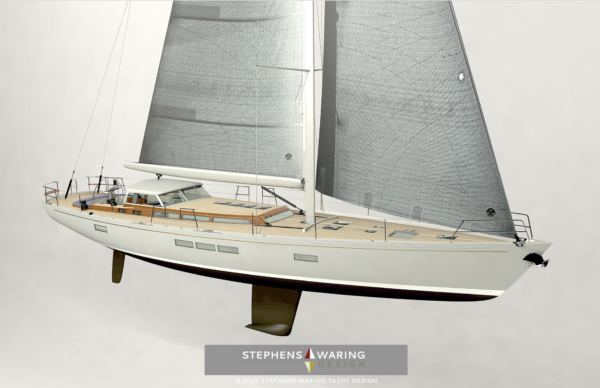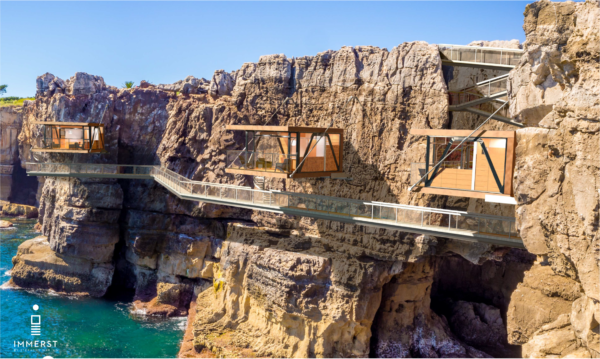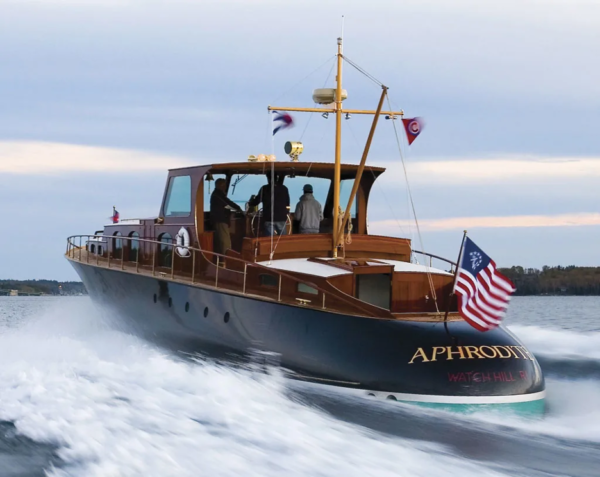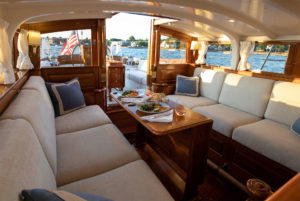
Interior designer Martha Coolidge, working with Stephens Waring Design, fine-tuned the style of the woodwork detail, panel layouts, light fixtures, and other elements of 65-ft ANNA’s appearance. Photo credit: Alison Langley
There’s some irony when it comes to looking at the hottest interior design trends for custom sailing yachts: much of the inspiration for today’s designs draw from the past – combined with modern innovation.
Interior designs that emphasize simplicity, balance, and natural materials are hardly revolutionary. Quite the opposite. But there is a new take and balance between old and new, iconic and innovative, that seems to provide the perfect balance for creating incredible interior spaces.
We’re exploring the top 7 trends in custom yacht design for 2023.
Natural Light and Connection Between Interior and Exterior Spaces
The use of larger windows is a trend that has been gaining popularity in yacht design in recent years, as yacht owners increasingly want to maximize their views of the surrounding environment and bring more natural light into their living spaces.
One way that yacht designers are incorporating larger windows is by using high-strength glass materials that can withstand the harsh marine environment. For example, tempered glass or laminated glass with multiple layers can provide the necessary strength and durability to withstand the wind, waves, and impact from flying debris.
In addition to using strong glass materials, yacht designers are also using innovative engineering techniques to maximize the size and placement of windows. Lightweight structural materials such as carbon fiber and titanium in the yacht’s construction, allow for larger windows without compromising the yacht’s structural integrity. In the photo of ANNA, above, the white-painted transverse structural knees are part of a carbon fabrication that strengthens the cabin and carries the mainsheet loads while blending into the classic joinery.
Multi Functionality and Flex Spaces
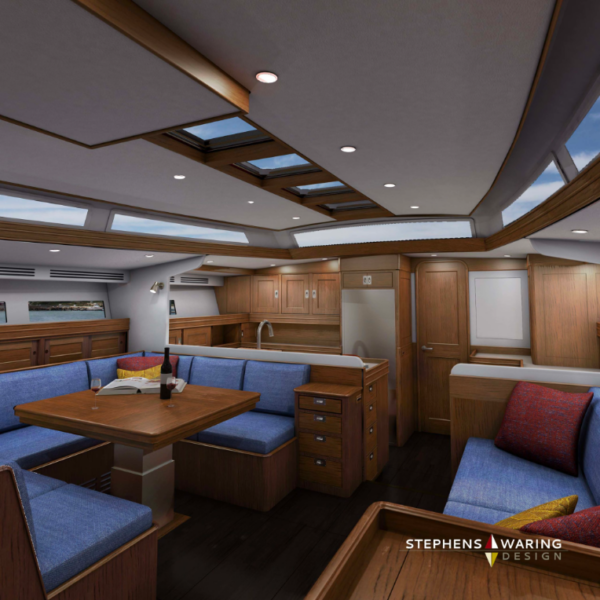
The design for 68-ft CIRRUS comes from blending 40’s & 50’s era style. The large saloon is designed to provide long-term comfort and versatility with innovative vertical storage and a vaulted ceiling that includes panoramic angled glass as well as overhead skylights. Design by Stephens Waring under construction at Jim Betts Enterprises.
Owners are spending more time aboard their vessels and are adding to the list demands and programmatic needs. These include home-office, fitness centers, gourmet kitchens, and gathering places for family and friends to spend longer durations of time together.
Because space is at a premium on a yacht, designers are creating multi-functional spaces that can serve multiple purposes. For example, a seating area that can be converted into a bed or a dining table that can be lowered to create additional seating. Clever storage solutions are also being incorporated into yacht design to make the most of available space.
Old World Charm Meets Modern Sensibilities: Spirit of Tradition
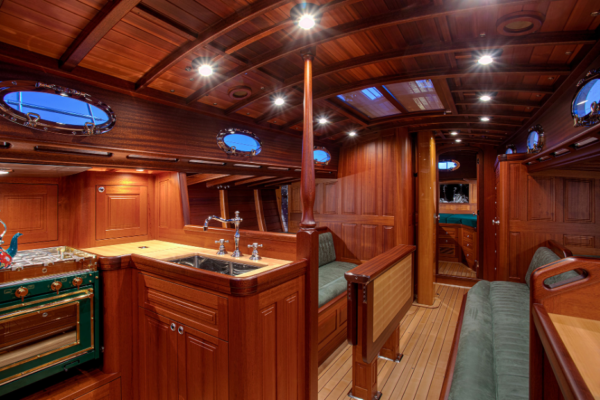
44-ft ITALMUS blends a 1940’s vernacular into the stylistic details and overall aesthetic of the yacht. The interior styling and design is aimed to mirror the era with a theme of highly crafted raised paneling and elegant joinery detail of select quarter sawn mahogany and finished in satin varnis. Design by Stephens Waring, built by Van Dam Classic Boats. Photo credit: Billy Black
Yacht designers have always had a particular reverence for heritage and history. The notion of heading out to sea conjures images of bygone eras past. Capturing that essence requires a balance that avoids becoming kitsch or contrived. While mid-century design may be considered the hot design trend of 2023, as designers steeped in a Spirit of Tradition design philosophy, we feel we’ve never left the genre.
Spirit of Tradition designs embody some historically identifiable link, particularly expressed in the shape and aesthetic exhibited in the design form of the hull and superstructure. Equally important, a Spirit of Tradition vessel must embrace modern development in materials, construction methods, mechanical systems and naval architecture science. Without the Spirit in development, we’re left with only Tradition.
Natural Materials
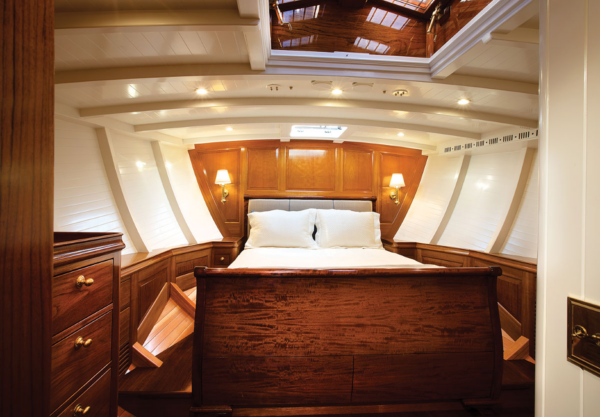
Douglas fir deck beams, traditional raised and v-groove paneling, bright varnish and white painted surfaces make it a light, airy enclave. Interior design by Martha Coolidge and Stephens Waring Design. Boat construction by Lyman-Morse. Photo credit: Alison Langley
Yacht owners by their very nature are drawn to water and the natural world, so it makes sense to incorporate natural elements such as wood, stone, and other organic materials in design. These materials create a sense of warmth and connect the interior spaces to the natural surroundings.
As experts in wooden boat design, we have long touted the benefits of timber for structural elements. However, incorporation of hardwoods, as well as a growing trend in sustainable timbers, have become increasingly popular with owners looking to achieve aesthetic, durability, and sustainability objectives in interior design.
Other natural materials such as leather and wool are also being incorporated to add texture and comfort. These finishes not only look beautiful, but they are also durable to withstand the harsh marine environment.
Renovation and Restomods
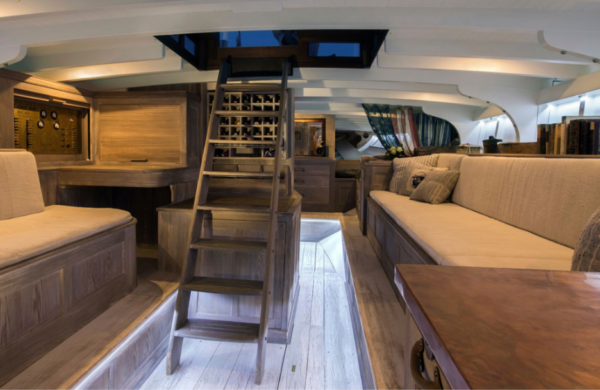
The owner of Marilee (built in 1926) had the bold vision to create an interior that reflected the yacht’s century-long provenance while creating an open space below. The team worked with Paul Waring of Stephens Waring Yacht Design, to create a traditional and properly constructed interior with an updated layout for relaxed, modern day use. Photo credit: Alison Langley
The popularity of restomods has been well established in the world of classic cars, but it has only recently grown in popularity in the world of yachting. Fortunately, this is changing with plenty of success stories to point to. Restomods are ideal for owners looking for cost-effective transformations that maintain sentimental connections to vessels and deliver stunning customized spaces that can be more cost effective than new custom builds. They are also popular with owners who inherit family boats, but need more utility and comfort for future generations.
Historical interiors often lack the ergonomics and amenities most owners seek today. Good restoration projectsembrace as much of the original charm and character of the original design as possible while improving comfort and livability. Upgrades to electrical systems, electronics and navigation, plumbing and propulsion systems are low hanging fruit. The interior design aesthetics requires a careful and complementary approach which honors the original character while updating comfort, utility, and aesthetics.
Flexible Spaces for a Crew Cabin
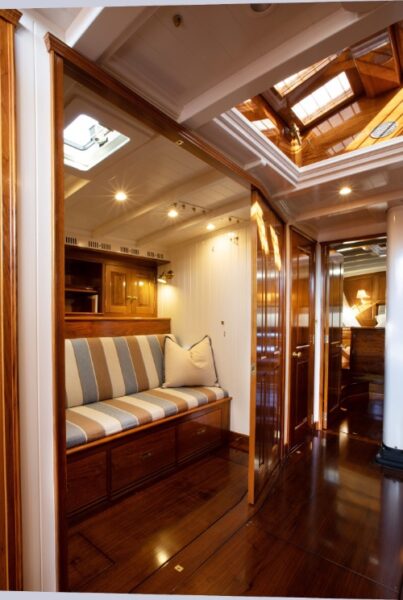
65-ft ANNA’s design includes a unique pocket door system. The design provides an easy way to expand square footage when the cabin is not needed or to private a comfortable extra cabin or crew quarters when extra hands or guests are aboard. Design by Stephens Waring. Construction by Lyman Morse Photo credit: Alison Langley
Owners often struggle with the balance between the desire for a larger vessel with larger interior spaces and the challenge of maintaining a total vessel size (and cost) which is manageable.
As we get older the idea of managing and skippering our own vessel can come at the expense of enjoyment. Hiring crew alleviates some of the operational challenges and burdens, but it also means sharing interior space with others.
Flexible crew cabins provide a cost effective way to optimize space for when crew is and isn’t aboard. One solution is the installation of pocket doors on sleeping quarters. This converts square footage from private berths (crew quarters) to main salon gathering space when doors are opened and transforms the space to private rooms for guests and crew when needed.
Smart technology
Yacht owners are increasingly interested in incorporating smart technology into their vessels. This includes lighting, climate control, entertainment systems, and security features that can be controlled remotely. Smart technology allows yacht owners to control the environment on board and manage energy consumption more efficiently. It also adds an extra layer of security by allowing the owner to monitor their yacht from afar.
Related Articles:
A Clients Dream Crystalized in Spirit of Tradition Style
Pushing the Edge of Accommodations Design
Boat Renovations and Restorations 101
Yacht Philosophy: How to Make Small Spaces Feel Big

